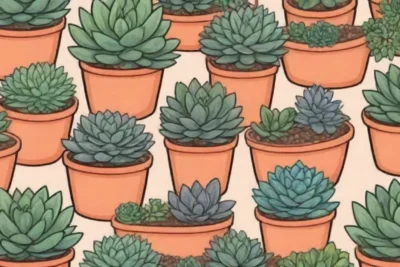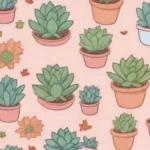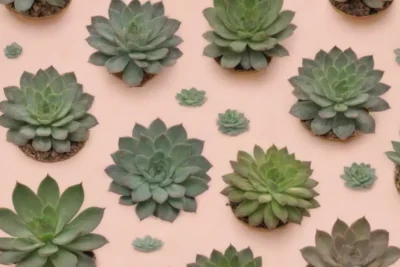
The Artistic Side of Dormancy: Photography and Succulents

Introduction
The world of succulents is nothing short of captivating; these resilient plants, known for their fleshy parts that store water, exhibit an extraordinary array of shapes, sizes, and colors. While many people adore their aesthetic appeal, few understand the intricacies of their dormancy period—a phase in which these plants conserve their energy and resources, often leading to stunning visual transformations that can be highlighted through photography. This article delves into the artistic side of dormancy in succulent plants and explores how this unique characteristic offers ample opportunities for photography enthusiasts to capture breathtaking images.
In this exploration, we will discuss what dormancy entails for succulents, detail the artistic photography techniques that can elevate the portrayal of dormant plants, and finally, celebrate the beauty that emerges from capturing these plants in various states of rest. By raising awareness about the fascinating relationship between dormancy and art, we hope to inspire both hobbyists and seasoned photographers alike to find new ways to appreciate and document nature’s artistry.
Understanding Dormancy in Succulents
Succulents enter a phase termed dormancy as a natural response to environmental stressors such as extreme temperatures or scarce water resources. Essentially, this period allows them to conserve energy and survive harsh conditions. One of the most remarkable aspects of succulents is that their dormancy varies greatly depending on the species and the climate in which they thrive. For instance, many desert succulents generally enter dormancy during the hottest months of summer, while others may go dormant during winter months—often when temperatures drop or rainfall decreases drastically.
During dormancy, the leaves of succulents may change color, losing their vibrancy in order to minimize evaporation. The plant may appear wilted or shriveled, and some species will display a more subdued color palette. However, this disheveled appearance should not be misinterpreted as a sign of unhealthy plants; instead, it portrays a natural resilience—the ability to withstand fluctuations in their environment. Understanding the conditions that trigger dormancy is essential for plant care, allowing enthusiasts to monitor their succulents’ needs correctly.
Furthermore, the artistic merit of dormant succulents lies in their unique physical characteristics. The textures of their leaves, often highlighted during this phase, demonstrate a rich tapestry of patterns that create dynamic visual interest. When photographed, these plants offer photographers a way to explore contrasts in shape, form, and color, resulting in images that tell a compelling story of survival and adaptation. Each succulent, during its dormant phase, has its own narrative that can be expressed artistically through the lens.
Techniques for Capturing the Beauty of Dormant Succulents
Composition and Lighting
Capturing the essence of dormant succulents through photography requires an understanding of composition and lighting techniques. One of the most effective methods is to use natural light to highlight the delicate features of these plants. Early morning or late afternoon light—often referred to as "golden hour"—casts a warm, soft glow that accentuates the textures and colors of the leaves, allowing them to shine in all their glory. This lighting is extremely flattering and can transform an ordinary image into an extraordinary one.
When composing your shot, consider the rule of thirds, which states that dividing your frame into thirds both horizontally and vertically will help you create a visually interesting composition. Place your succulent off-center to encourage the viewer’s eye to explore the surrounding space, capturing not just the plant, but also an insight into its environment. Additionally, playing with depth of field can be incredibly effective; using a wider aperture can blur the background, allowing the succulent to take center stage while softly removing distracting elements.
 When and How to Propagate Dormant Succulents Successfully
When and How to Propagate Dormant Succulents SuccessfullyMacro Photography
One of the best methods to showcase the intricate details of dormant succulents is through macro photography. This technique allows photographers to capture close-up images that reveal the fascinating textures, colors, and patterns present in the plant’s leaves and surfaces. Macro photography highlights minute details that might otherwise go unnoticed at a glance, transforming the seemingly mundane into extraordinary works of art.
To successfully capture macro images, a macro lens is recommended. However, for those who may not have access to specialized equipment, extension tubes or even the macro setting on a smartphone camera can produce impressive results. Pay attention to your focus and background; selecting a clean, uncluttered backdrop will prevent distractions that could detract from the beauty of the succulent itself. Accessories such as reflectors can also be used to enhance lighting and bring out the richness in color without overpowering the subtleties that dormancy presents.
Utilizing macro photography can tell a story of patience and resilience, and create a visual exploration of the plant’s journey through challenging conditions. Each shot can encapsulate a fleeting moment of beauty, capturing the process of dormancy and the unique attributes of various succulent species.
Creative Perspectives and Abstract Imagery
As photographers seek to create visually striking images, exploring creative perspectives and abstract imagery can open new avenues for artistic expression. Instead of relying solely on standard angles, consider experimenting with different viewpoints—shooting from above, below, or at unusual angles can yield innovative results that challenge conventional photography norms. This creativity captures the dormant state of succulents in unexpected ways, leaving viewers intrigued and occasionally pondering.
Additionally, playing with abstraction can transform these plants into vivid expressions of color and shape. Create ethereal images by blurring the lines between the plant and its surroundings—by intentionally defocusing elements, you can convey a sense of mystery that provokes thought. Through the use of long exposure techniques, movements can be captured within the frame, creating a dreamlike or surreal quality that speaks to the essence of dormancy.
Artistic explorations encourage photographers to transcend the boundaries of traditional plant photography and discover an emotional connection with nature. Each photograph reflects not only the succulent but also the photographer’s unique interpretation of its dormant state, transforming the ordinary into the extraordinary through the lens of creativity.
Conclusion

 Preparing Your Succulents for Dormancy: Key Steps to Follow
Preparing Your Succulents for Dormancy: Key Steps to FollowThe artistic side of dormancy in succulents offers an exciting realm of exploration for both horticulture enthusiasts and photographers. Understanding dormancy deepens our appreciation for these resilient plants while providing insight into their beauty during a phase often underappreciated. Photographers can use various techniques—such as composition, lighting, macro photography, and creative perspectives—to capture and celebrate the uniqueness that dormant succulents embody.
In addition to technical prowess, it is crucial to develop a deep-seated connection with your subject. Observing the transformations that succulents undergo during dormancy invites a renewed sense of respect for the natural world, showcasing nature's ability to endure and adapt. By emphasizing these themes in our photography, we can encourage a more profound awareness of the beauty found within the mundane aspects of life.
Ultimately, the artistic journey of capturing dormant succulents paves the way for an extraordinary narrative that intertwines nature and art. Each photograph serves not only as evidence of the plant’s exquisite qualities but as a reminder of its resilience. As we celebrate and document this interplay through photography, we contribute to a shared understanding of nature’s artistry, allowing others to experience the stunning beauty of succulents in their dormancy. Through words and images alike, let us continue to discover and inspire others to appreciate the artistic side of dormant succulents.
If you want to read more articles similar to The Artistic Side of Dormancy: Photography and Succulents, you can visit the Dormancy Period category.



You Must Read